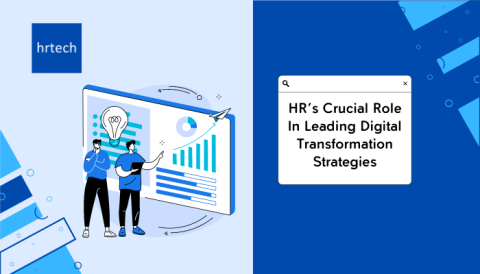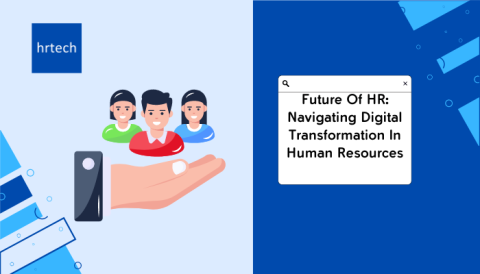Did you know that 95% of HR leaders are already using or planning to use HR tech tools? As the business world changes, the way we handle HR needs to change too. That’s where HR SaaS comes in.
In this article, we’ll take a closer look at Human Resource Management SaaS and give you all the details you need to decide if it’s right for you. Find out how HR SaaS can help you make things run smoothly, and help your company succeed.
Introduction to Human Resource Management SaaS:
Human Resource Management Software as a Service (HR SaaS) provides a centralized platform for managing various HR functions, including:
- Employee onboarding
- Performance management
- Payroll processing
- Benefits administration
HR SaaS is a subscription-based model that lets businesses use powerful HR software through the internet.
Instead of installing and maintaining the software on their own computers, companies can simply log in to the cloud-based platform and use its features. This approach removes the need for a lot of IT equipment and lowers the costs compared to traditional in-house solutions.
Many modern HR departments have started using HR SaaS because of its many benefits.
- HR SaaS makes HR processes simpler, reduces paperwork, and improves data accuracy.
- Allows real-time access to employee information, helping managers make better decisions and work more efficiently.
- HR SaaS often includes self-service portals, letting employees manage their own data and reducing the workload for HR professionals.
One of the main advantages of HR SaaS is that businesses of all sizes can use it. Small and medium-sized enterprises (SMEs) can now afford the same powerful HR tools that were once only available to big companies.
HR SaaS can easily adjust to a company’s changing needs and growth. Moreover, because HR SaaS is cloud-based, businesses can access their HR data securely from anywhere, at any time.
Growth Trajectory of HR SaaS Market:

The HR SaaS market has been growing rapidly in recent years. In 2021, the Core HR Software Market was already worth a whopping $17.18 billion. According to MRFR, it will keep expanding rapidly, reaching $35.13 billion by 2030. That’s an impressive growth rate of 11.1% per year.
With such strong growth, it’s no surprise that investors are pouring money into HR SaaS platforms. Smaller and medium-sized businesses, in particular, are driving this trend. They made up nearly 61% of the Core HR Software market in 2020. Speaking of HR trends, you might also want to check this guide on key trends about HR Digital Transformation.
Types of HR SaaS Solutions:
An HRMS can handle everything from recruiting and onboarding to benefits and payroll. Some popular HRMS solutions include BambooHR and Namely. An HRIS, on the other hand, is all about the data. It’s where you store and manage all the important information about your employees, like their contact details, job titles, and performance reviews.
HCM software takes things to the next level by helping you manage your workforce more strategically. This can include things like tracking employee skills and certifications, managing learning and development programs, and analyzing workforce trends. For example, SAP SuccessFactors is a well-known HCM solution used by over 7000 customers.
When choosing an HR SaaS solution, you’ll also want to consider whether you want a best-of-breed solution that specializes in one area, like recruiting or performance management, or an all-in-one solution that covers multiple areas.
Not sure which HR SaaS solution fits your business? Our marketplace features a wide range of options, from HRMS to HCM, tailored to your company’s size and needs.
Core Features of HR SaaS:
Let’s take a closer look at some of the core features you can expect from HR SaaS solutions:
Payroll processing, employee onboarding, and benefits administration:
HR SaaS automates these crucial but time-consuming tasks. As a result, your HR department saves a couple of hours on a daily basis.
Time and attendance tracking:
Forget manual timesheets. HR SaaS solutions like BambooHR allow employees to easily clock in and out, request time off, and track their hours worked. Plus, managers can approve timesheets and PTO requests with just a few clicks.
Talent and performance management:
From setting goals to conducting performance reviews, HR SaaS makes it simple. Lattice, for instance, integrates performance management with employee engagement tools.
Recruiting and applicant tracking systems (ATS):
Recruiting and applicant tracking systems (ATS) help you streamline your hiring process with HR SaaS. For instance, over 5000 organizations use Lever, an ATS platform to refine and fine-tune their hiring process.
Advantages of HR SaaS:
With HR SaaS, you don’t have to worry about big upfront costs. Instead of buying expensive software, you pay a monthly or yearly fee. This means you can budget better and avoid surprise expenses. Studies show that HR Departments can save up to 30% in their software costs after they shift to a SaaS solution.
HR SaaS keeps all your employee information in one place. No more digging through filing cabinets or spreadsheets. With just a few clicks, you can access everything from contact details to performance reviews. Furthermore, many repetitive HR tasks can be automated with SaaS.
For example, the software can automatically calculate vacation days, track attendance, and generate reports. This frees up your HR team to focus on more important things, like employee engagement and development. HR SaaS can make hiring and onboarding much smoother. Applicant tracking systems help you post jobs, screen resumes, and schedule interviews.
Onboarding modules ensure new hires have all the information and training they need from day one. This leads to faster time-to-productivity for new employees.
With HR SaaS, it’s easier to track employee performance and give meaningful feedback. You can set goals, conduct reviews, and identify top performers. The software also simplifies benefits administration, allowing employees to enroll and make changes online.
Choosing the Right HR SaaS for Your Business:
When selecting a human resource management (HRM) software-as-a-service (SaaS) solution for your company, there are several key factors to consider:
Another decision is whether to go with an all-in-one HRM suite that includes most features in a single platform or specialized tools. All-in-ones provide a central source of employee data but may not have best-in-class functionality in all areas. Also, consider your budget and calculate potential return on investment.
While HRM SaaS removes IT infrastructure costs, the subscription fees can add up, especially for large workforces. Balance the efficiency and time-saving gains with the total cost.
Here’s a detailed guide on choosing the best Human Resource Management Software you can check for further learning.
Implementing HR SaaS:
Even though almost one-fifth of organizations have formed an HR tech plan, its implementation remains pending. Here are some key insights that can help you with speedy implementation of HR SaaS solutions. Whenever you’re looking for an HR SaaS solution for your company, first collect all the necessary requirements. Work closely with your HR department to understand their specific needs and pain points before evaluating solutions.
Pro-Tip: Look for HR SaaS that offer solid API facility, then pre-built integrations. A strong API allows you to build custom integrations if needed. For example, popular HR platforms like Workday can be challenging to integrate with, so API flexibility is key. Now apart from requirements and API, it’s also essential to consider the user experience. The HR team and employees should find the interface intuitive. For instance, systems like BambooHR, Rippling, and Cezanne are noted for their ease of use.
Don’t overlook data privacy and security. Understand the vendor’s data handling practices. Some HR platforms sell or provide access to sensitive employee data. Remember, popularity doesn’t always equate to good quality HR SaaS products. ADP and Paycor are widely used but have mixed reviews.
On the other hand, newcomers in the industry like Namely and Gusto are gaining traction. So, consider your unique needs and choose the product accordingly. Identifying the right HR SaaS for your business needs a careful selection process. Our advisory team can guide you through choosing the most suitable solutions available in our marketplace.
SaaS HR Software Costs and ROI:
When considering HR software, cost is a big factor. SaaS HR tools have different price tags and payment setups. You can find some HR SaaS with a freemium pricing model. While others offer monthly and annual plans. If you have a large organization, you may also offer custom quotes based on your usage and needs.
Most charge a monthly fee for each employee, which could be $5-$15 per person. Some have flat rates, like $100/month for up to 50 workers. Pricier plans with more features might cost $20-$30 per employee monthly. The real question is: will the HR software pay for itself? Adopting it should save time and boost productivity. Say it cuts 10 hours per week of admin work at $30/hour. That’s $15,600 saved yearly, easily offsetting the software cost.
Plus, self-service HR portals significantly reduce questions for HR teams. Freeing them up drives even bigger gains in the long run. Payback periods vary but often fall within 6-24 months. Automation, less turnover, and better efficiency are all the contributing factors.
Success Factors for HR SaaS Software:
While choosing the right HR SaaS software for your company, there are a few key success factors to keep in mind. First, you’ll want to look for a solution that offers a high level of automation and easy-to-use employee self-service features. This can save your HR team a ton of time on routine tasks like benefits enrollment and time-off requests.
Another important factor is advanced reporting and analytics capabilities. With the right HR SaaS software, you should be able to quickly generate detailed reports on things like employee turnover, compensation trends, and workforce diversity.
Also, strong security features are a must-have for any HR SaaS solution. Look for software that offers robust data encryption, multi-factor authentication, and regular security audits. This is critical for protecting sensitive employee data and ensuring compliance with all regulations.
Conclusion:
Human Resource Management SaaS is really changing the way businesses manage their human resources. It offers a centralized platform to handle all HR functions efficiently and cost-effectively.
Implementing HR SaaS can lead to significant time and cost savings, as well as improved productivity and employee engagement. With the right solution, you can streamline your HR processes, make data-driven decisions, and focus on growing your business.
Ready to transform your HR operations to the next level? Browse our website and explore our curated marketplace of top-notch HR SaaS solutions.





